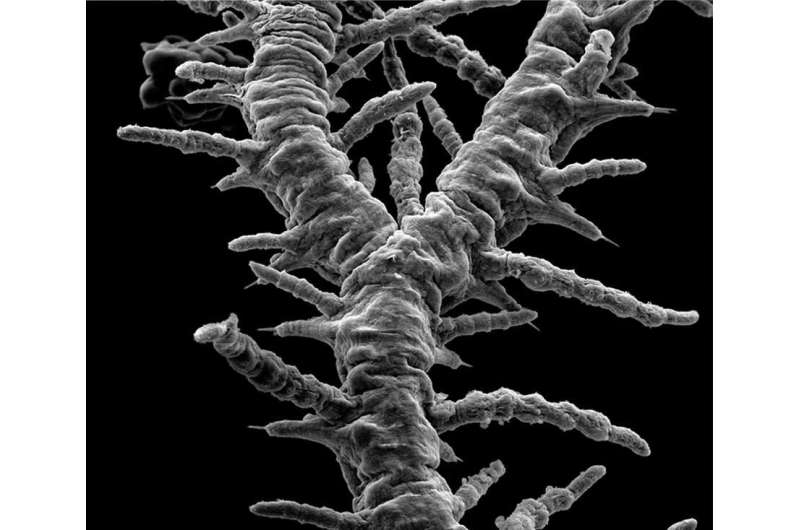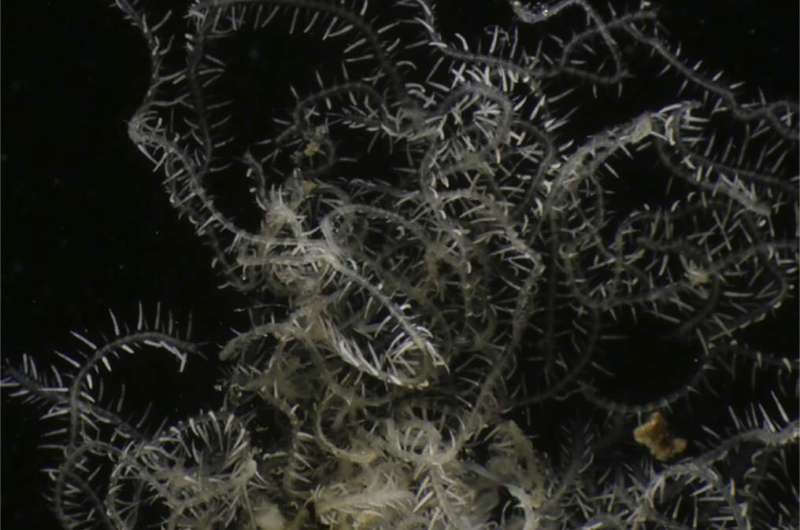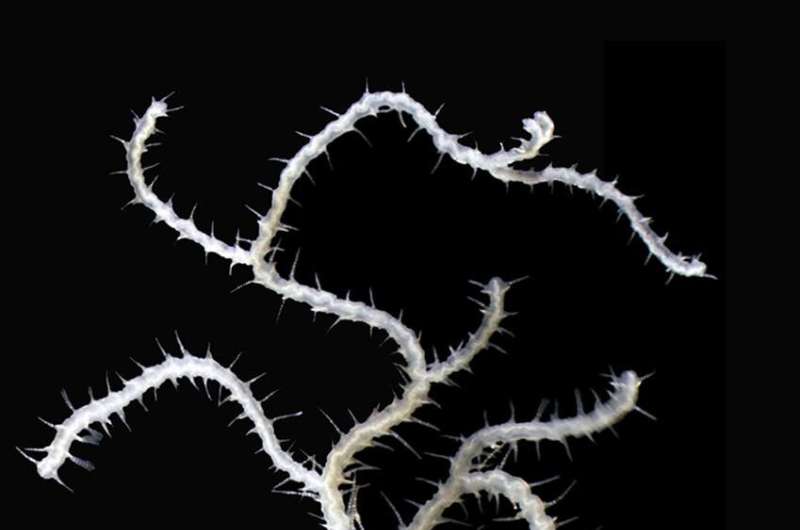Scanning electron microscope image of branches of the newly discovered species of branching worm, Ramisyllis kingghidorahi. Credit: Professor M T Aguado
Branching marine worms are extremely rare: bizarre creatures with one head but a body that branches repeatedly into multiple posterior ends. Only three such species are known, and one of these worm species has just been awarded a place in the top-ten marine species from 2022 by the World Register of Marine Species (WoRMS). Named Ramisyllis kingghidorahi after King Ghidorah, Godzilla's monster enemy, the new species was first described by an international team led by Göttingen University.
Japanese researchers discovered the branching worm and sent images to Professor Maite Aguado, University of Göttingen, who recognized that this was a special discovery. The new species is named after King Ghidorah, the three-headed, two-tailed, monstrous arch-enemy of Godzilla. Both characters are based on Japanese mythology and folklore.
Aguado says, "This remarkable animal that can, like King Ghidorah, regenerate its lost ends, is worthy of recognition. And as far as we know, no creature associated with Godzilla has made the top ten in the World Register of Marine Species. So this time, King Ghidorah has won."
Fragment of one specimen of the branching worm. Credit: M T Aguado and G Ponz-Segrelles
A multidisciplinary team of scientists from Germany, Spain, Australia and Japan described the worm by combining their expertise in morphology, internal anatomy, ecology, phylogeny, genetic divergence and mitochondrial genomics. Yet many mysteries remain: "These branching worms live inside the internal canals of sea sponges but they do not eat sponge—at least none has ever been found in their transparent, tree-like bodies, and no traces of sponge DNA have been found in worm samples," says Aguado.
The research team has also found many small hairs inside the multiple digestive tube endings, close to the anuses. "This might suggest that the creature is pulling seawater in near its posterior ends. This could increase its nutrient intake with the water." Though it might sound strange, these would not be the only animals able to absorb water via the anus, other worms, as well as sea cucumbers can incorporate seawater inside their bodies in this way.
Recently discovered branching worm in the top-ten marine species from 2022 by the World Register of Marine Species (WoRMS), Ramisyllis kingghidorahi, named after Godzilla's nemesis. Its head is at the bottom of the image. Credit: M T Aguado and G Ponz-Segrelles
These intriguing branching animals also have a fascinating way of reproducing. They release multiple breeding "units," each with their own brain and eyes, full of eggs, which leave the sponges for reproduction. How the little new branching worms find a new sponge remains to be discovered.
The original findings are published in the journal Organisms Diversity & Evolution.
More information: M. Teresa Aguado et al, Ramisyllis kingghidorahi n. sp., a new branching annelid from Japan, Organisms Diversity & Evolution (2022). DOI: 10.1007/s13127-021-00538-4
Provided by University of Göttingen


























